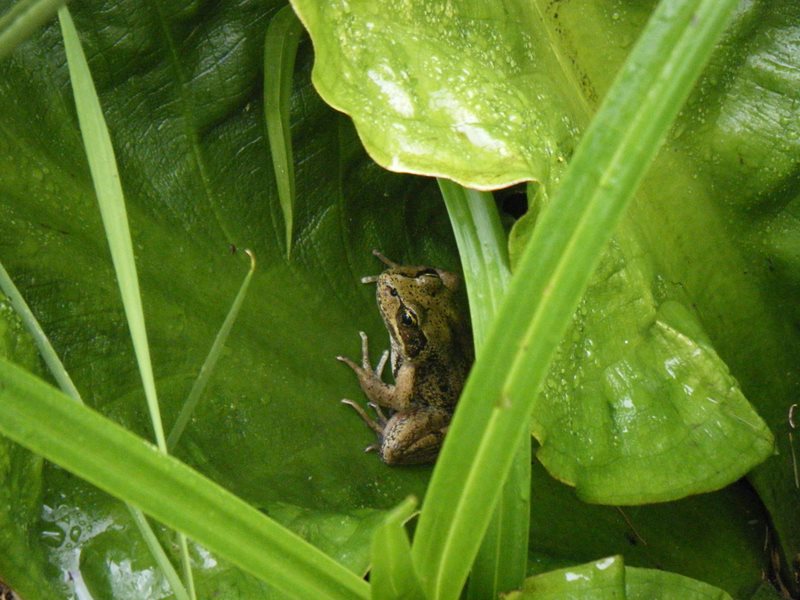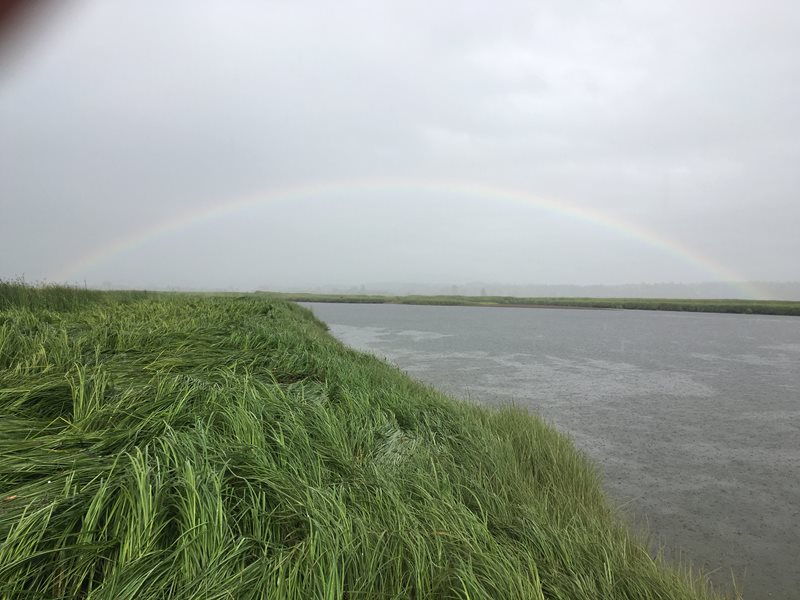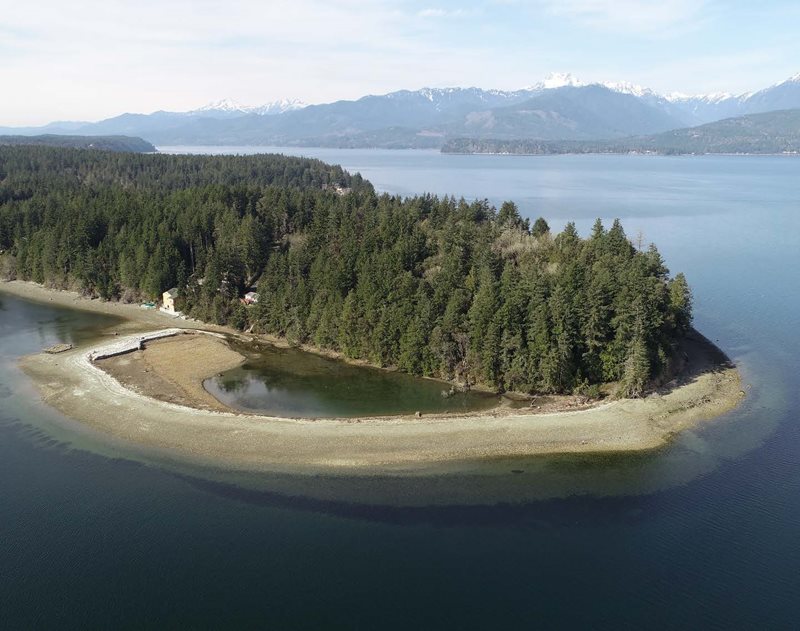
Skunk cabbage leaf reveals red-legged frog.
Find a mass of Pacific chorus frog eggs, spot a green-winged teal, discover where juvenile Chinook salmon hang out, or witness how nature slows down and filters runoff after a downpour.
May is American Wetlands Month. As the year’s fifth month ushers in warmer weather, it is a great time to observe another season of rebirth and renewal where land and water meet.
State-managed lands re-opened for day use
Nearly everyone in Washington lives close to a wetland. On May 5, Gov. Jay Inslee re-opened many state-managed parks, wildlife areas, recreational lands, and boat launches to safe public day use, after closing the lands to protect public health and slow the spread of coronavirus.
Many parks and other state-protected lands also feature wetlands. From shallow depressions that fill seasonally, to high-elevation cool mountain pools, to the marshes, bogs, and ponds that stay wet nearly year-round.
Wetlands for the birds, the fish, and everything else
In Washington, tens of thousands of acres of wetlands are protected under state law. These critical habitats serve as spring nurseries for a multitude of waterfowl, shorebirds, and songbirds as well as insects, amphibians, fish and shellfish, and a host of other unique plant and animal species.
Wetlands are vital places for salmon, the primary food source for endangered Southern Resident killer whales and other marine mammals.
Wetlands also are among the most complex ecosystems on earth, rivaling tropical rain forests and coral reefs for the diverse life and natural systems they support. These habitat areas help fight climate change by capturing and sequestering carbon.
They also help control floods and fight erosion while filtering pollutants from runoff and replenishing underground sources of drinking water.
Vigorously protecting Washington’s wetlands
We work hard in Washington to ensure we don’t lose the vital functions that wetlands provide. For example:
We operate a robust mitigation program where wetlands are restored, created, enhanced, or preserved to offset unavoidable impacts to wetlands or other aquatic resources. We work in partnership with the U.S. Army Corps of Engineers to certify and regulate wetland mitigation banks. We have an interactive map where you can find mitigation banks located throughout Washington.
Coastal wetlands at Misery Point in Kitsap County will be protected.
In April 2020, we secured seven federal grants worth more than $5 million to help our local partners restore and enhance nearly 500 acres of coastal wetlands and 17,500 feet of marine shoreline in Jefferson, Kitsap, Snohomish, Thurston, and Whatcom counties.
Finally, we are assessing the full effect of a new federal rule changing the definition of “waters of the United States” subject to federal water quality protections. The rule excludes many state wetlands and streams that flow in response to rainfall as well as other water bodies from federal oversight. But these waters are still protected under Washington law. We're considering all options to ensure wetlands remain protected and we're working with local and private partners as we evaluate the best path forward.
Wetland education and training resources
We have a wide variety of educational guides, videos, webinars, and classes about Washington wetlands. From belted kingfishers to dragonflies, from newts to cattails, make May your American Wetlands Month.





